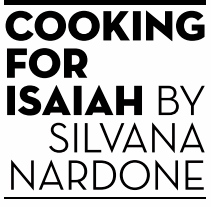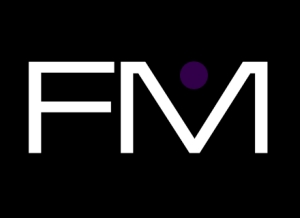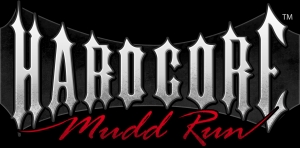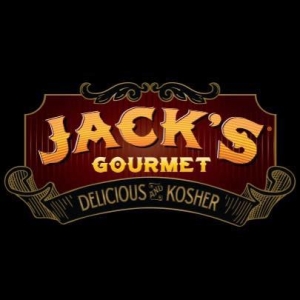Did a United States appeals court just give the green light for the registration of generic marks? Not exactly, but the Fourth Circuit’s recent decision in Booking.com v. USPTO may have poked some holes in trademark law doctrine. The USPTO had refused registration of the travel website’s mark “Booking.com.” The website successfully appealed to the Eastern District Court of Virginia and the Fourth Circuit upheld that decision. The USPTO argued that adding a top level domain (“.com”) to a generic second level domain (“booking”) can never transform the generic term into a protectable mark. However, the Fourth Circuit disagreed that a “per se” rule applied. Instead, the court determined that based on Booking.com’s consumer surveys, the mark was descriptive and therefore protectable. While its unlikely that the USPTO is going to start registering generic terms based on this decision, as expressed by the sole dissenter Judge Wynn, competitors seeking to register domain names may find it a cause for concern.
Cannoli Showdown
In a bizarre dispute involving a Broadway musical and the self-appointed “Cannoli King” of Little Italy, Tech dirt is reporting that:
Little Italy pastry shop owner John "Baby John" Delutro of Caffé Palermo asked Broadway's "A Bronx Tale" to remove a sign on its set that dubs another pastry joint "The Cannoli King," infringing on his trademark.
The show — a coming-of-age story about an Italian kid growing up in the Bronx during the socially segregated 1960s — is currently crediting Arthur Ave. pastry shop Gino's with the coveted cream-filled title on one of its storefront signs in the set.
The lawyer for "A Bronx Tale" refused to comment, but producers for the show said they plan to re-paint the sign.
John DeLutro is the owner of a registered trademark for CANNOLI KING, Reg. No. 4991693, with a first use date of August 17, 1977. Competitor, Gino’s, under the name of Jerome Raguso of the Bronx, applied for a trademark for THE CANNOLI KING on January 31, 2017, claiming a first use date of May 7, 1997. That application is likely to be rejected based on confusing similarity. The sugar hit the fan when the musical’s set bestowed the title of The Cannoli King on a depiction of the Bronx establishment.
Although the producers of the musical plan to repaint the sign, there was literally no possibility of trademark infringement — no use of “The Cannoli King” as a trademark — in this case. Although we might have hoped, even dreamed, for a cannoli showdown, the title of CANNOLI KING seems likely to be decided by the USPTO. Either way, the specimens of use promise to be delicious.
Trademark Opposition Basics
Filing a trademark application isn’t the same thing as having a registered trademark — it’s just a step in a process, and usually not even the first step if things are done the right way. (The first step in filing for a trademark should be having a clearance search done.) What many people do not realize, however, is that even if a Trademark Examining Attorney approves of a trade mark application, it has to go through a 30-day publication period where it can be opposed by third parties.
This allows rights holders an opportunity to oppose trademarks that they believe were wrongfully approved for publication. Decisions as to which trademarks should and should not be registered are not always obvious, and Examining Attorneys do sometimes make subjectively interesting decisions, to put it nicely. On the other hand, the opposition process can be used by overreaching trademark holders to carve out a broader scope of trademark rights than the law would otherwise normally afford. Many small companies and start-ups don’t have the tens of thousands of dollars necessary to fight an opposition proceeding to a conclusion, and can be bullied by multi-billion dollar corporations into abandoning otherwise valid trade marks.
A clearance search can sometimes help to identify if such corporate aggressors are lurking in the shadows, although other times the oppositions are so outrageous that they would be difficult to predict. There are times when the parties might be able to come to a co-existence agreement, but it all depends on the marks in issue and the companies involved as to how these issues resolve themselves. Other times, it might be advisable to pass up an otherwise available mark to avoid an inevitable conflict with an 800 pound corporate gorilla. An experienced trademark attorney, can advise clients as to their options under the circumstances and help to devise the best strategy for anticipating and dealing with these types of issues.
Trademark Infringement Thoughts
Can a trademark owner with a common law trade mark do anything to stop an infringer from infringing on her mark? For that matter, what is a common law trademark? If she does nothing, are her rights waived? What if she has a federal trademark registration — is she required to sue every possible infringer in order to protect her trademark rights?
Common law trademark rights are rights accrued under the law by using a trademark in commerce in connection with the offering of goods or services. They extend to the territory where the mark is used, as opposed to federal trademark rights which cover all 50 states in the U.S. Common law rights must also be proved with evidence of use, whereas federal trademarks carry a presumption of validity and statutory damages. A common law trademark holder still has rights which can be protected under the law. The law on when a trademark owner needs to act to protect a trademark is complex and nuanced — the cryptic answer is not unless the infringing use is material, i.e., it matters. If the infringer is making enough of an impact in the marketplace, a trademark holder must take action to stop the infringer or risk waiving its rights.
Of course, these types of issues tend to be highly fact-specific, as with everything in trademark law. It’s best to consult a trademark attorney if you have any questions.
What Makes a Trademark Distinctive?
In order to function as a trademark, an adopted word, phrase or symbol must be distinctive. Distinctiveness is the thing that transforms an ordinary turn of phrase into a brand, capable of identifying the source of goods or services. In some sense, distinctiveness can be thought of as uniqueness, as in the case of “fanciful,” i.e., coined trademarks. These are marks like TWITTER, GOOGLE, and MICROSOFT, which are made up words. Distinctiveness can also exist when one uses an ordinary dictionary word in a way that has no connection to the meaning of the products or services being sold, e.g., APPLE for computers or mp3 players, or DELTA for an airline. In some cases, the distinctiveness arises because of the leap of logic that is required to associate the trade mark with the goods or services being sold. SUGAR for a dating service, or ROACH MOTEL for a roach trap are examples. All of these types of distinctiveness are thought to be inherent, meaning that nothing more is needed to make such marks distinctive.
Some trade marks begin their life cycle as descriptive marks, which are not distinctive. Marks that merely describe a good or service are not entitled to registration on the Principal Register, however, they can acquire distinctiveness through use. Marks comprised of last names, such as MACY’S and BLOOMINGDALE’S, and geographic marks, such as BROOKLYN BREWERY, began their lives as descriptive marks, but acquired distinctiveness through use in commerce. Other marks that describe an aspect of the goods or services offered, such as BANK OF NEW YORK for banking services, or REGISTER.COM for a company that registers domain names, also started out lacking distinctiveness, but have become well-known brands. And that’s really the key to distinctiveness, the ability of a trademark to identify a brand.
While some companies prefer to adopt inherently distinctive marks, others prefer to choose names that describe their offerings. A trademark attorney can assist you to know which is right for your company.





























